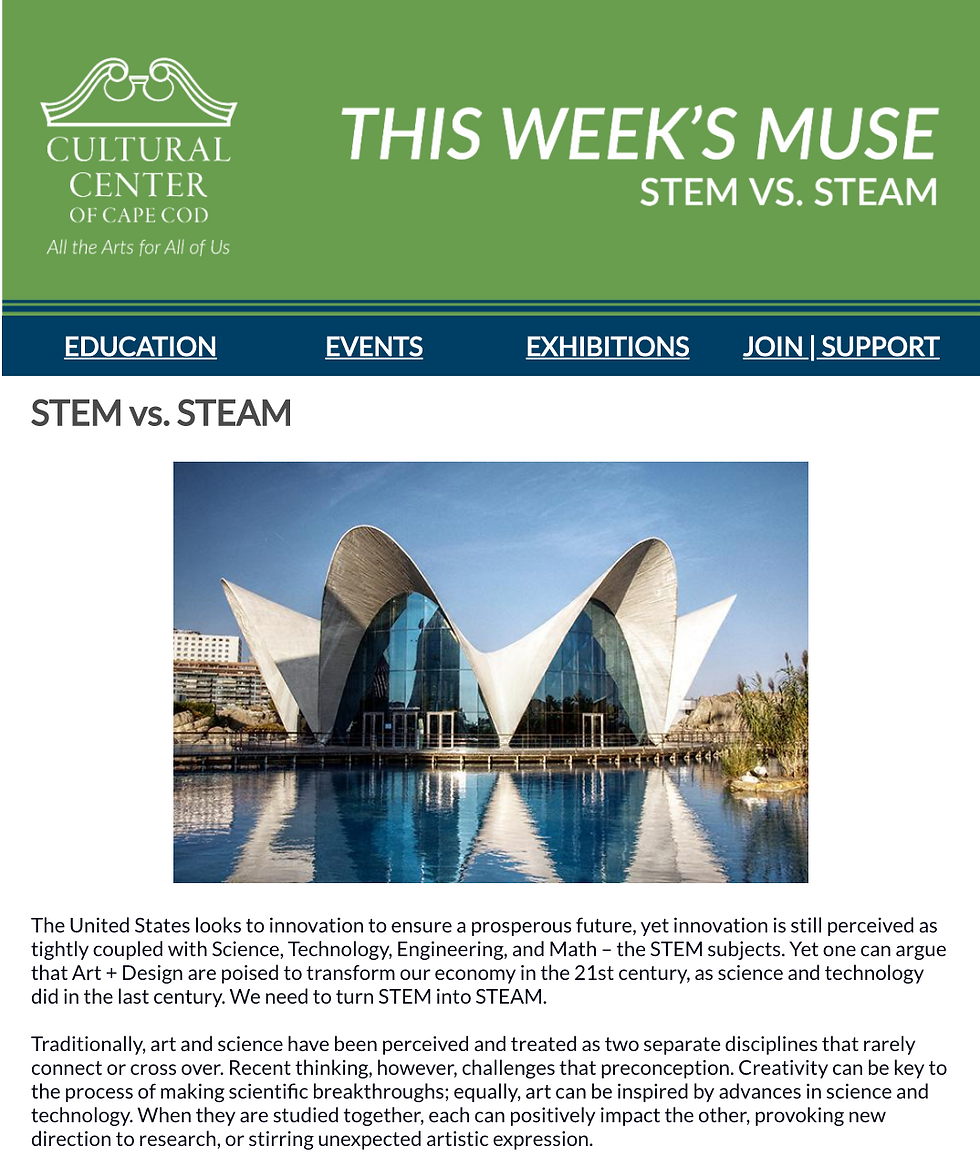
The United States looks to innovation to ensure a prosperous future, yet innovation is still perceived as tightly coupled with Science, Technology, Engineering, and Math – the STEM subjects. Yet one can argue that Art + Design are poised to transform our economy in the 21st century, as science and technology did in the last century. We need to turn STEM into STEAM.
Traditionally, art and science have been perceived and treated as two separate disciplines that rarely connect or cross over. Recent thinking, however, challenges that preconception. Creativity can be key to the process of making scientific breakthroughs; equally, art can be inspired by advances in science and technology. When they are studied together, each can positively impact the other, provoking new direction to research, or stirring unexpected artistic expression.
This concept is not new; Leonardo Da Vinci is an early example of using STEAM to advance his scientific understanding of the world and develop his artist expression. Think of his Vitruvian Man, his drawings of the human body, and how he uses art and science to inform and develop both disciplines. And it's the same today; Corvette designers used the manta ray as design inspiration for their cars, and art and music often inspired the stunning architecture of Frank Lloyd Wright. Conversely, scientists like Thomas Edison, the Wright brothers, Marie Curie, and Rosalind Franklin used creative and artistic steps to help move them towards discovery and invention.
To push this concept a step further, let's include performing arts, such as drama and speech. Think of technical or persuasive writing. Those arts fit naturally into the engineering design process. To round this out, include creative planning, which encourages us to adopt a playful, inventive, artistic approach to problem-solving. It seems we could all use more of that in our lives.
Creativity is the magic that happens at the intersection of art and science. The acclaimed cellist YoY Ma refers to this as the 'edge effect', the place where two apparently diverse disciplines collide, provoking new blends and new ideas. The move from STEM to STEAM creates a place where new possibilities in art and science are made possible.
With STEAM, we can dispute biases that learning areas are separate and move past the "I'm good at math and science, so I'm not creative" way of thinking. This paradigm shift will revolutionize how we see problems and create a new way of thinking that is engaging, multifaceted, and inclusive, with diversity of representation and thought.
This is how it is in the real world, after all.

Comments